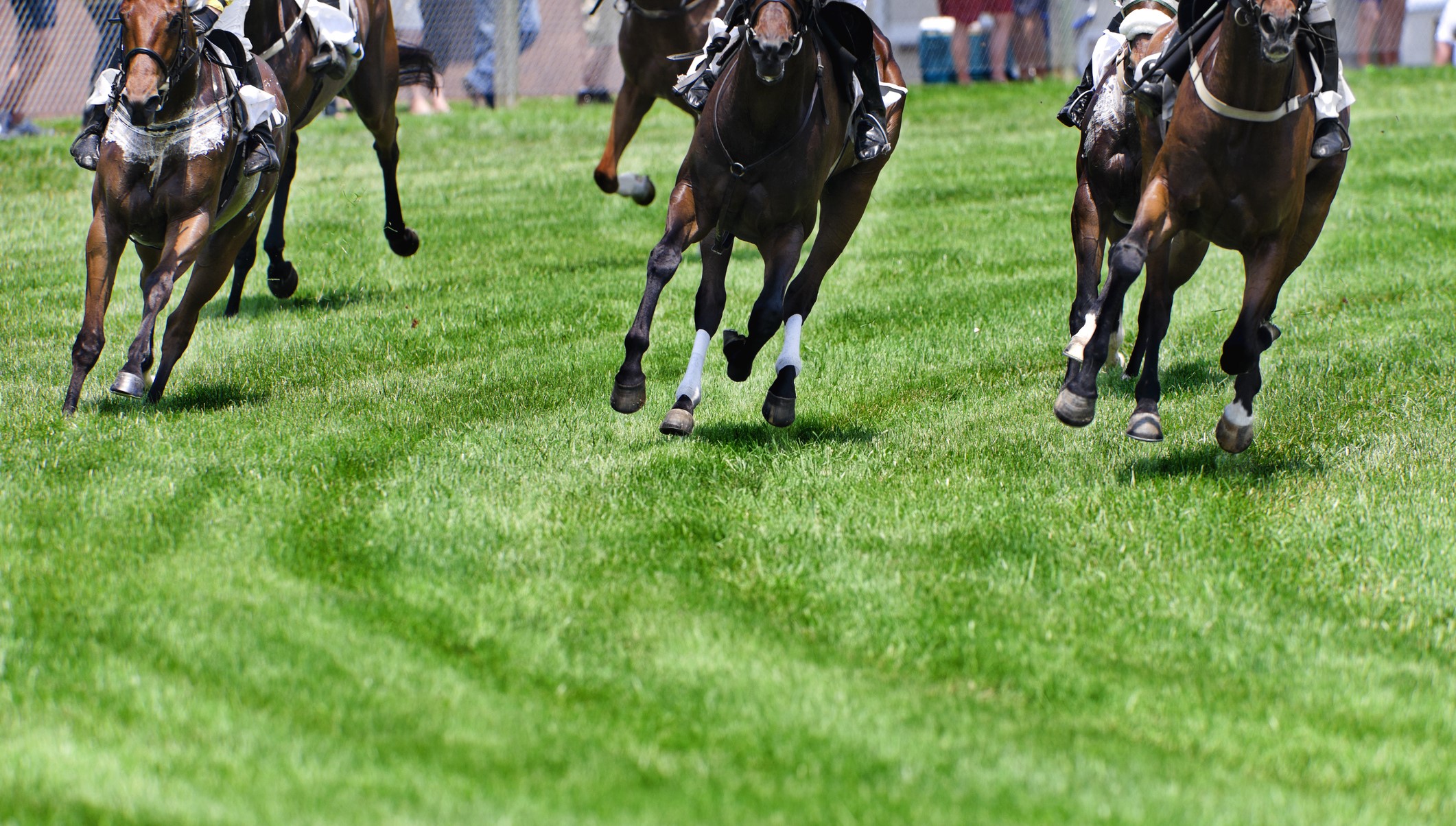Making horse racing safer in Kentucky and beyond: How new tools could revolutionize the game
Making horse racing safer in Kentucky and beyond: How new tools could revolutionize the game


In horse racing, a track's turf surface is more than just grass. It sets a stage where safety and fairness are vital. With the racing community always looking for ways to make the sport safer, a new study has shed light on tools that make assessing the condition of racetracks much easier and more accurate.
Titled "A Comparison of Devices for Race Day Characterization of North American Turfgrass Thoroughbred Racing Surfaces," this study, published in MDPI Animals was a joint effort by the University of Kentucky Martin-Gatton College of Agriculture, Food and Environment (CAFE) and Michigan State University (MSU). It is now helping lead the way to a safer sport.
The researchers set out to find an easier way to check the consistency and safety of racetrack surfaces, which has become even more important since the introduction of the Horseracing Integrity and Safety Act (HISA).
“While there's been extensive research on dirt surfaces, turf racing has gained popularity and presents unique maintenance challenges,” said study author Peter Schmitt, a UK Ph.D. student in biosystems and agricultural engineering. “Our study focuses on turf, aiming to identify surfaces that can remain free-draining and hold races under varying weather conditions.”
The traditional testing method involves the Orono Biomechanical Surface Tester (OBST), designed by Michael Peterson, study co-author, UK Department of Biosystems and Agricultural Engineering professor and director of the Racetrack Safety Program. Developed nearly two decades ago, the OBST mimics the forelimb impact of a Thoroughbred at a gallop. Recognized as the industry's gold standard test equipment for this use, it plays a crucial role in pre-meet inspections of racing surfaces. However, there is one drawback—its complexity for everyday use.
"The OBST, while invaluable for pre-meet inspections, isn't suited for daily assessments due to its size and the training required to operate,” Schmitt said. “We're exploring tools to make these essential surface checks more accessible to racetrack personnel."
The research team tested five portable tools at MSU’s Hancock Turfgrass Research Center in East Lansing, Michigan that could offer a quicker, easier way to get valuable information about the track's condition.
“Our goal was to evaluate whether simpler, more accessible tools could approximate the OBST's measurements,” Peterson said. "If simpler tools can approximate the OBST's detailed measurements, it could revolutionize how racetracks are maintained–making it easier to keep conditions consistent and safe without extensive equipment or specialized training."
These five tools—a moisture probe, a Clegg Impact Hammer, a Longchamp Penetrometer, a Turf Shear Tester and a GoingStick®—were used on various types of grass and soil mixtures designed to replicate the diverse conditions of North American racetracks. The goal was to see if these tools could accurately measure what's happening on and under the surface that's directly relevant to a racing horse's speed and safety.
According to Peterson, one of the study's most interesting findings was how well the moisture probe worked. Measuring soil water content can give a good picture of a track's overall condition. The study showed the Longchamp Penetrometer, which determines how easily the soil can be penetrated, and the Clegg Impact Hammer, which assesses the surface's hardness, also showed promise by giving a clearer view of what's underfoot.
These tools could allow racetracks to quickly gather important data about their turf surfaces, making it easier to keep the track in top condition for race day. This approach would improve the daily track maintenance and lead to a better understanding of how different surface conditions affect horse and rider performance—and, crucially, their risk of injury.
The potential research benefits extend well beyond the immediate safety improvements. By standardizing tracks' assessment, the industry can ensure that races are as fair as possible, with all horses running on surfaces that meet the same high standards. Moreover, combining surface condition data with race times and injury reports could provide new insights into preventing accidents and improving horse welfare.
"This isn't just about finding new tools; it's about improving our understanding of what makes a racing surface safe and fair,” Peterson said. “By integrating these assessments with other data, we can start to draw more nuanced conclusions about the factors contributing to safety and performance."
To view the study, visit https://www.mdpi.com/2076-2615/14/1/38.
This project was supported by the National Institute of Occupational Safety and Health (NIOSH), Centers for Disease Control and Prevention of the U.S. Department of Health and Human Services (HHS) as part of an award totaling $1.5 million with 0% financed with non-governmental sources. The contents are those of the author(s) and do not necessarily represent the official views of, nor an endorsement, by NIOSH, CDC, HHS, or the U.S. Government. For more information, please visit www.cdc.gov/niosh.
# # #
The Martin-Gatton College of Agriculture, Food and Environment is an Equal Opportunity Organization with respect to education and employment and authorization to provide research, education information and other services only to individuals and institutions that function without regard to economic or social status and will not discriminate on the basis of race, color, ethnic origin, national origin, creed, religion, political belief, sex, sexual orientation, gender identity, gender expression, pregnancy, marital status, genetic information, age, veteran status, physical or mental disability or reprisal or retaliation for prior civil rights activity.
Biosystems Ag Engineering Equine Research Students

